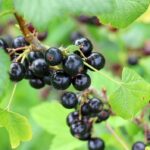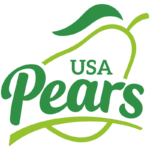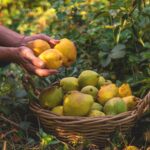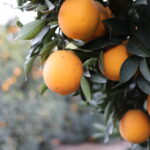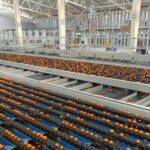The Ogg Blogg: Inspirations from Amsterdam Produce Show foodie-service tour

By Fresh Fruit Portal editor Matt Ogg
 Nothing cooks up emotions quite like food. It is the palate, it is sharing, it is identity, it is an escape. Transcending functionality, a plate of food today tells more stories than ever before, and the public has an inconceivable number of platforms for spinning their gastronomic yarns. Here’s one of them.
Nothing cooks up emotions quite like food. It is the palate, it is sharing, it is identity, it is an escape. Transcending functionality, a plate of food today tells more stories than ever before, and the public has an inconceivable number of platforms for spinning their gastronomic yarns. Here’s one of them.
Let’s face it. If we are what we eat, we are very confused. We want local, organic and sustainable, but like the Arcade Fire song we need “Everything Now”. However, there is also something very beautiful in the range of food options available and the livelihoods that variety supports. Concepts dubbed as elitist or hipster are fast becoming more accessible, less alternative, and the ideas put into practice by restaurants trickle down to everyday practices in the home.
That’s why the foodservice tour at this year’s Amsterdam Produce Show & Conference was an inspiration for me. With an itinerary put together by Maartje Nelissen of The Food Line-up – a young company that connects farmers, food trucks and events/festivals based on a philosophy of efficient food use through specialization – this conscientiously gluttonous tour had a bit of everything from the latest trends, whether it be garden-to-fork, food surplus utilization or on-the-go salads.
For Jay Greenslade, restaurant manager at The Avocado Show where the tour kicked off, “trend” is a dirty word.
“We don’t like that word because a trend is something that comes and goes, but we really believe the avocado is now here to stay. How can you stop loving it?”
Click here if you'd like to see a gallery of photos from the tour.
Avocados galore
Greenslade describes The Avocado Show as one of the world's "first social media restaurants". 
"Before we even opened the door we had 36,000 followers on Instagram," he mentions.
And it was Instagram that was partly the restaurant's inspiration for founders Ron Simpson and Julien Zaal. Certain items on the menu such as the avocado bun and the 'avocado garden' even have credit given to the Instagram handle @Fooddeco, belonging to food stylist Colette Dike.
"They saw that there was this large following of people who love avocado food styling pictures on Instagram, so they just thought if this picture can get 10,000 likes, what if we open a restaurant and create dishes that look as good as this but also taste amazing," says Greenslade.
"We all knew that it was going to be busy but we weren’t prepared for the success it has been. From the very first moment we opened the door, we had a line outside."
All avocados are from Dutch importer-distributor Nature's Pride with sources varying according to the season. Right now he says the fruit is from Chile and Peru, but there have also been some avocados from South Africa.
"The thing with Nature’s Pride is they only provide perfectly conditioned avocados, but when you use them as much as we do you notice subtle differences, like the South African ones for example have really thick skins...they're a little bit harder to manipulate into a row shape," he says.
"I say they [Nature's Pride] provide only perfect avocados but there are some that slip through the net. We are able to use a slightly less than perfect avocado for guacamole, or we put it in our smoothies.
The dishes are so colorful and elaborately prepared that one almost feels guilty to dig in, and the restaurant plows through 200-300 avocados daily.
Building on an existing menu that also includes such preparations as vegan matcha pancakes with blueberries, a poké bowl and an "avocado rose" on toast, the restaurant has also hired a development team for the kitchen with new ideas.
"Because we are expanding as a company we are very aware that we need to always progress and move forward; we can’t stand still and always serve the same dishes," Greenslade says.
"Every now and then we have a tasting evening where we sit down and they come to us with the new dishes, and there are ones where we say ‘this one’s not going to work’ or ‘this one is going to take too much time and effort’.
"We have to find the right balance. It’s very difficult in a small kitchen like this to knock the food out of the kitchen in a reasonable amount of time."
"From the very first moment we opened the door, we had a line outside." #TheAvocadoShow #Avocados @AMSProduceShow #CelebratingFresh @FruitPortal @ProduceBizUK pic.twitter.com/Jw4SUP8oEQ
— Jim Bartelson (@JCBartelson_FnV) November 17, 2017
Sla raises the bar for organics in foodservice
Salad bars are of course nothing new around the world, but Sla co-founder Jop van de Graf says it wasn't so common before in Amsterdam. Inspired by the format of New York salad bars, 4.5 years ago he and his wife Nina Pierson took on the challenge of to changing the fast convenience scene in their own city.
"It was difficult to find healthy fresh food in an easy way. Of course we could go to the supermarket and get organic products and prepare them ourselves, but nowadays you don’t have the time for that," he says.
"After a while we thought how can we make this in a new way in an easy system?"
The result was Sla, meaning lettuce in Dutch, with a bit of a twist on the regular salad bar concept. The vast majority of the food has been organic, and very soon van de Graf expects 100% organic certification.
This is not at all common in foodservice.
"We started with a 10% margin for ourselves. In the beginning it was not a big thing yet, it was coming, so we were 90% organic and had some margin," he says.
"For example chicken is super expensive if you buy that organic and we don’t want to sell salads for €15. We want to make it accessible price-wise."
But recently the company switched to a new organic food supplier Udea, making the 100% goal achievable.
"With the new partnership it's also in reach now, it's easier. It’s quite a big st ep, so we'll have certification of 100% eco somewhere in the beginning of next year.
ep, so we'll have certification of 100% eco somewhere in the beginning of next year.
"It’s also maybe a little bit to inspire all the other restaurants here in Amsterdam and the rest of the Netherlands.
"I was speaking with the auditor and he told me only 1% of the food sold in the restaurant business is organic. What I don’t like in restaurants is when they put something organic in a dish and it is only 10% of the whole dish; it is more like a marketing trick."
There was never any intention originally of turning Sla into a salad bar chain, but it was a "big hit" from the beginning according to van de Graf.
As a result, more Sla salad bars sprung up in Amsterdam as well in Utrecht, the Hague and Haarlem. The chain currently has 12 shops with plans to open two more in January in Rotterdam and Amsterdam.
"After the third and fourth location we started thinking more broadly about how we were going to do this, to expand into another city in Holland like Utrecht. It’s really difficult to check this quality, so the final solution was to have a central kitchen in Amsterdam," he says.
The Netherlands is small so a centralized system works for Sla, and as of recently the new partnership with Udea has led to working with an external kitchen as well where cooks prepare according to Sla's recipes.
"They are delivering very consistently," he says.
"We want to grow into new parts of Holland, open up more shops, but also next to that we really want to inspire people. For example next year we’d like to do more workshops and tell people more about our products, where they come from, the farmers, and the value of real food.
Harnessing food surplus at Instock
"80% of what you're eating is food that would have been wasted" - Freke van Nimwegen of Instock @AMSProduceShow #CelebratingFRESH pic.twitter.com/jD2ag93yLS
— Fresh Fruit Portal (@FruitPortal) November 17, 2017
At the time of writing, since Instock opened its doors in June 2014 it has rescued 317,945kg of food that would have gone to waste.
And that number is only going to keep ticking higher, with a business model that has perfected the art of sourcing, sorting and serving up delicious, healthy meals using food surplus from supermarkets
"At Instock we turn food surplus into creative meals and products," says Instock co-founder Freke van Nimwegen.
"Seven days a week you can eat breakfast, lunch and dinner in this restaurant by whatever is in stock, so 80% of what you’re eating is food that would have been wasted.
"We never talk about eating food waste because it’s not waste obviously, but it would have become waste otherwise."
But where did it all begin? Van Nimwegen explains how she started her career through a graduate program at Albert Heijn's parent company Ahold involving one year at the company headquarters and another as a supermarket manager.
In her first year she was assigned the topic of food waste, and it wasn't long before she and three young colleagues entered a internal new ideas competition at the retailer (Best Idea of Young Ahold) and won. 
They presented their idea of creating a restaurant from supermarket food surplus to the CFO and CEO, and were then invited to present the concept to the company board.
"So we got a small budget to start it," she says.
"We said we don’t want the idea to be put in the hands of a few people – we really want to do it with the four of us because we believe in this and we have a certain image of how this should look.
"So we went basically outside of the company to create this new entity - a really new brand and entity called Instock."
The founders had already worked in supermarkets so for a start they already knew which products were wasted.
"And we knew a lot of the time it was just edible food. It’s not because of food safety that it was wasted," van Nimwegen says.
"We found a lot of products were just fresh products that didn’t meet the quality standards. Of course supermarkets want to maintain high quality standards and the most beautiful fruits and vegetables, and also the consumer wants to have value for their money and they will pick the most beautiful apple from the shelf.
"This leaves us with an amount of food at the end of the day that is unsold but it’s still perfectly edible. We knew this and we also knew that changing processes in the supermarket, where often 200 people work, is difficult."
The first step was setting up a separation process for food surplus at the supermarket, sorting into different crates in a way that was food safe.
"We changed it but we didn’t know it was going to work. We drove our cars to the supermarkets, and learning by doing we could figure out the process and how to get people enthusiastic to work with us," she says.
"And believe me, the stores were happy they could give it to us because they don’t feel good about it either to throw away things."
About a year later Instock set up another restaurant at the Buitenhof in the country's political capital the Hague, which is also beneficial because the entrepreneurs want to put the topic of food waste on the political agenda. After that, a third store was opened in Utrecht.
Since then business has also expanded into food trucks for events, and beer made from bread and potatoes that after rescuing are sometimes still unable to be used even by the Instock chefs.
The distribution and inventory processes have also become more efficient, as the team knew it wouldn't be viable to drive around store by store across three cities. Instock has set up a small "Rescue Center" warehouse next to where Albert Heijn keeps its unsold products as well as paper and plastic.
"What we do right now is work with Albert Heijn...we can  send it with the transport that is already driving, so that’s great.
send it with the transport that is already driving, so that’s great.
"A few months ago we added a little warehouse of Instock next to this Albert Heijn warehouse, and that’s the place where we want to scale up so we can send more products than just from Albert Heijn supermarkets.
"Because it’s a new process we put it online with a little web shop, so our restaurant managers and the chefs in our restaurants, they can ask for whatever is in stock, they can order it."
This development allows restaurant managers and chefs to plan more efficiently, and as a result the restaurants can now have weekly menus rather than daily menus.
"365 days of being creative as a chef, and then for 100 people in the restaurant, it drives you crazy. So this is a big step up," she says.
"Our chefs are the heroes at Instock because they have to create all these products. They do that really professionally – they use a lot of preservation techniques, because one day they’ll get a crate of Brussels sprouts and the next day they don’t get any vegetables; right now we have a little bit more of a stable source of income."
She says the business model is profitable but with a lot of reinvestment, so the level of profitability is currently hard to measure as this is the first year with three restaurants operating.
"Before that it was just investing, investing, investing, so we cannot have a good clue of what is actually the cash flow," she says.
"We are a foundation. It’s not something we put on our door but we are part of the Dutch social enterprise network, something comparable to the international B-corp movement...we do strive for profit, but all the profit is re-invested for a good cause. So for us profit is a means and not an end goal – we really use it to start up new projects and new initiatives to fight food waste."
She adds that the company itself can pay staff salaries and sourcing costs, but Albert Heijn supports the salaries of the co-founders.
While the impact of Instock is substantial in terms of the sheer quantity of food, as well as the amount of water and resources used to use it, the impact barely touches the tip of the food waste iceberg.
She highlights that 1.3 billion kilograms of food are wasted each year. Out of all the food that is produced, van Nimwegen mentions 35% is lost.
This includes 13% at the farm level before it even reaches retail, 15% on the consumer side, 5% in restaurants, and only 2% at retail.
"Of course the retail has influence across the whole chain because they talk to producers about what they put in shelves, and and they talk to the consumer by selling for example one plus one; they have influence in that way in how much the consumer wastes."
On that note, the Instock founders' mission is to go beyond just the restaurant and its affiliated food surplus-based products.
"We have the ability to collect even more food than we do right now, so our strategy will not be necessarily to open a thousand restaurants," says van Nimwegen.
"Of course if we get a new beautiful location that looks good then we will open a new location, but we said if we really want to make an impact and increase the kilos that we collect, then we need to speak to regular restaurants, to catering companies, if they want to use the same products as we do because they already have the buildings, the chefs and they should adopt this way of working," she says.
"We’re testing this now with a few catering companies so it’s working, so we’re looking for new customers in the hospitality branch that want to work with this product."
As the meal and presentation came to a close, we asked the co-founder whether if Instock's goals were achieved getting many more restaurants on board, would they then need to compete for food surplus?
"That would be a good conversation starter, because then you move back to the question - we just have too much don’t we?
"There’s just too much production happening here in the Western world while in other countries somewhere else they just have hunger and poverty, so if we can compete with the larger groceries that deliver to the hospitality branch, then we’d probably get some comments about it and not positive ones but the negative ones. And then we’d have a conversation."
Reduce Reuse Recycle , the challenge for the foodservice industry! Thanks @AMSProduceShow for this amazing tour Thanks @INSTOCK_NL #SLA pic.twitter.com/yQi9iDDetI
— PROECUADOR ROTTERDAM (@PROEC_ROTTERDAM) November 17, 2017
Restaurant De Kas: Greenhouse fruit & veg from garden to fork
The final stop is unlike any of the others. For starters it’s in the middle of a picturesque park and to get there you pass what is more like a native wetland than your standard urban Dutch canal. To your left, red-tinged autumn leaves and birdlife, and to the right the chic glass structure of Restaurant De Kas. 
The building used to be the Amsterdam Municipal Nursery and was going to be demolished in 2001 before acclaimed chef Gert Jan Hageman adopted it for conversion into a restaurant while retaining a small nursery at the back.
“This was abandoned - the park looked totally different. It was not something where you’d like to stroll around very much,” says restaurant gardener Fenneke Peters.
“The idea is to have fresh and seasonal vegetables in our restaurant year-round.
Today the entire structure is a sight to behold, and there is a charm in the pots of mushrooms, the flowers, kohlrabi, citrus trees, and cabbages that have had their sheet cover lifted off for us to see. Up the back there’s even a pineapple, and between this nursery, a farm in the nearby Beemster area and local farmers, the restaurant is able to source its produce.
“In wintertime we have almost 70% of the vegetables come from the garden, and in the summer it’s a lot more; besides lemons, almost 90% of the fruits and vegetables come from the Beemster,” says head chef Jos Timmer.
"We preserve a lot of things in the summer. We make a lot of vinegars and we make kimchi, the cabbage we ferment, and in the future we would like to do that even more so in the winter.
"The whole menu changes on a weekly basis and every day we have small changes with herbs that we can pick here or things like that."
Timmer has been working at the restaurant for a year, and tells tour attendees it has certainly changed his perceptions about what fresh really means.
"Before I worked in the Rijksmuseum in the restaurant called Rijks. There we also used a lot of products from the Netherlands," he says.
"The difference is the way you look at vegetables, and the quality we have here is a lot higher than what we’ve seen in my career. And also there's a difference when you pick something in the morning and then serve it for lunch.
"I always thought it doesn’t really matter if a courgette stays in the fridge a few days, but you start tasting and the feeling and the taste are completely different. That was the biggest change for me when I started working here."
This freshness and quality comes with a much higher price tag than the other restaurants visited during the tour, but it goes a long way in addressing the large disconnect between consumers and the food they eat. And as Timmer points out, between farms and chefs too.
Given the restaurant's garden-to-fork philosophy, it is no surprise that vegetables always play the most important part in De Kas' dishes.
"The menu is a six-course menu and the first three dishes are always vegetarian and then the main course is an optional vegetarian or meat, so let’s say 80% of the menu is vegetarian," he says.
"You see it in a lot of restaurants now that vegetables play a bigger part – in the future we would like to work even less with fish and meat, and become even more vegetarian.
"It has to do with the fact that our vegetables are of very high quality, and we treat them like you would fish or meat. So you don’t leave them in the fridge three or four days."




















